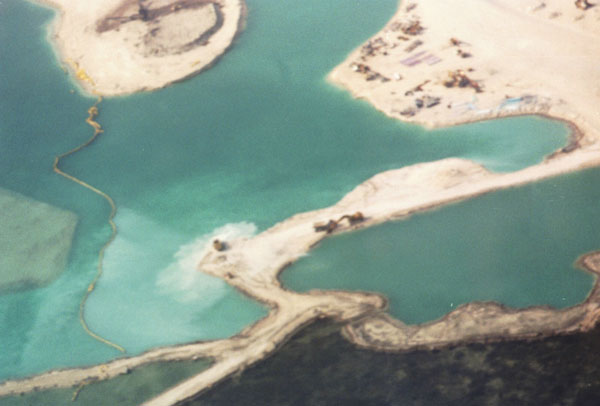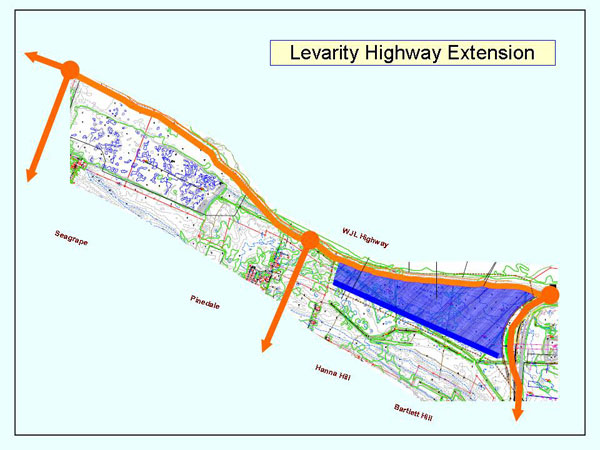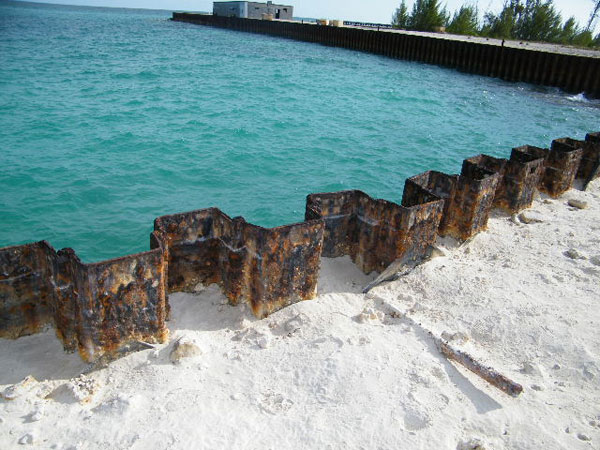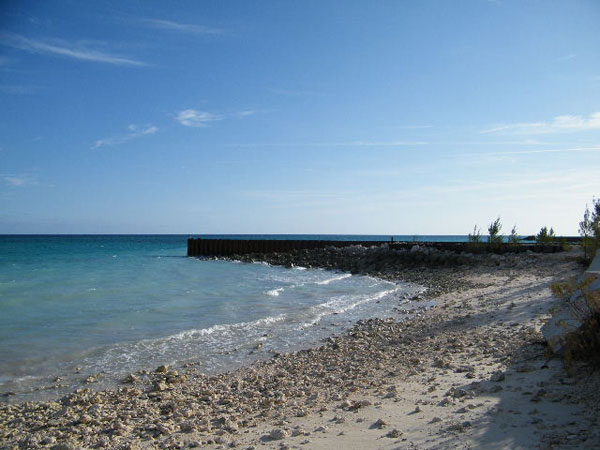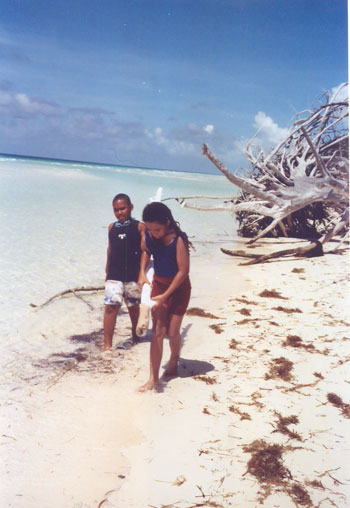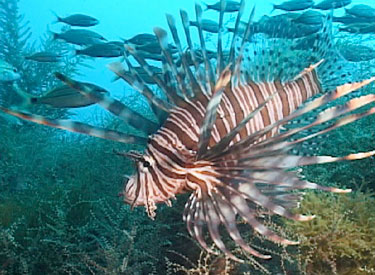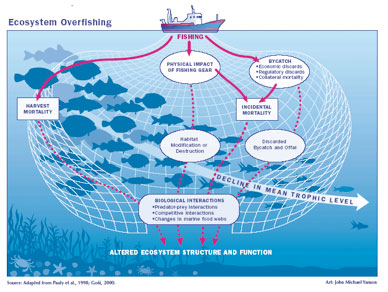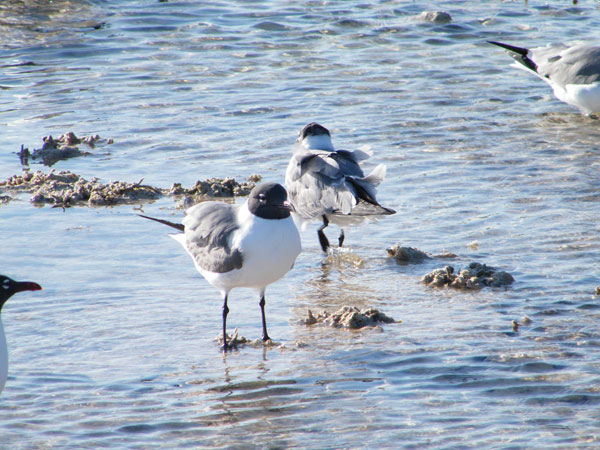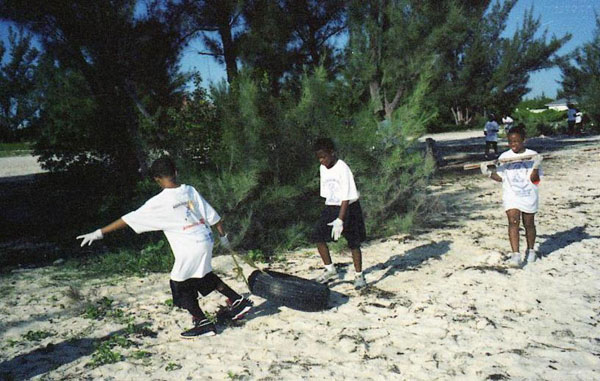|
From:TheBahamasWeekly.com Grand Bahama
Coastal Awareness as it relates to Grand Bahama Island and Bimini By Gail Woon, member of the Grand Bahama Eco-Tourism Association and member of the Coastal Awareness Committee, Founder of EARTHCARE. 8th April, 2010 Good evening, The Ministry of Tourism asked me to come this evening to make a presentation to you for Coastal Awareness month highlighting Coastal Awareness as it relates to Grand Bahama Island and Bimini. The Honourable Prime Minister, Hubert Ingraham has declared April Coastal Awareness month. In 1992 The Bahamas Government signed the Convention on Biological Diversity recognizing the importance of marine biodiversity and the need to develop mechanisms for the sustainable use of coastal and marine biological diversity. In June 1997 The Government of the Bahamas signed the Ramsar convention which provides for the protection of wetlands, including shallow coastal and marine ecosystems. HABITAT DESTRUCTION Is the main coastal threat for both Bimini and Grand Bahama as well as Abaco, and well, we haven’t done a great job in this regard of late. Just take a look at what once was the mangrove nurseries of Bimini and you will see a disaster in the making. Already scientists have recorded a significant reduction in larval recruitment in the Islands of Bimini now that their natural habitats, acres and acres of healthy mangroves have been bulldozed and dredged to make a playground for foreigners.
Clear cutting land, mangrove, wetland areas contributes to coastal degradation and increases the likelihood of damage from storms and hurricanes. In 2008 an MPA Marine Protected Area was announced for Bimini however to date the MPA has not been finalized. Locals do not know the boundaries or the rules that would be in force re the MPA and there is no enforcement anyway. The developer is stripping away the mangroves at an incredible rate while our Government is failing on the oversight of the project that they promised. On Grand Bahama Island, Martin Marietta Bahama Rock has been harvesting our land literally. They seem to have completed the enlargement of the harbour and now want to advance their operation to cross the Warren J. Levarity Highway. The residents there and in Queen’s Cove have complained for years of the damages to their houses and the damage to the wetlands but to no avail.
Also on Grand Bahama, moving to the East everyone remembers the huge production of the Pirates of the Caribbean II & III films in 2005/2006. Well, here we have another example of how not to do a project which involves habitat destruction. To accommodate the filming a “tank” was created. This entailed basically cutting a square out of the coast line and dredging it to 25 -30 feet deep. This was to install a gable system that would enable the film crew to rock the large pirate ship side to side. Local companies were unable to complete the tank on time and Disney ended up bringing in two dredging companies to finish the job. The problem is an EIA (Environmental Impact Assessment) was not done before the work was started. After it was started and residents complained a cursory EIA report was done but as far as I know it was not posted on the BEST Commission website for public review. And by then the damage was being done and continued unabated.
5 years later the home owners Bahamians and second home owners are suffering their beach is strewn with rocks so much so that they have to wear shoes to go swimming. The coral heads and soft corals are dead from the siltation; covered in an inch of silt. I was able to snorkel the reef there over Easter. The remnants of the tank are disintegrating. The tank was never bulkheaded with concrete properly so the metal edges are rusting away and the ocean is reclaiming the fill that was put on the land. The trial regarding the Wilson City Power Plant in Abaco was to begin this week but has been adjourned to April 30th. BEC is being accused of blue hole destruction and not engaging in proper public consultation as well as starting a project without the permits necessary in place. Residents in Abaco have let the Government and BEC know that they want their energy as sustainable as possible and that they want to be consulted before huge projects are begun. The anchor projects for every island community that the former administration was pushing are a good example of unsustainable development. While I know jobs are needed, the sheer size of a lot of these projects would have inundated some of these islands and would have changed their quaint “island” flavour forever not to mention that many of them would become gated communities where the foreigners would outnumber the indigenous Bahamian population. All of the above examples are current coastal issues we are facing in the Northern Bahamas.
Other aspects of Coastal Awareness include: POLLUTION/MARINE DEBRIS Which is a subject close to my heart. EARTHCARE has been participating in and supporting International Coastal Cleanup Day for many years. Marine Debris is trash that gets into the marine environment as a result of careless handling or disposal. 2 characteristics of trash, its buoyancy and ability to be blown around, affect how easily trash becomes marine debris, while the ease with which trash degrades dictates how long it remains in the marine environment. Marine debris includes all the objects found in the marine environment that do not naturally occur there. The most common categories of marine debris are plastic, glass, rubber, metal, paper, wood and cloth. Marine debris affects wildlife by entanglement and ingestion. Marine mammals, turtles, birds, fish and crustaceans all have been entangled in or have eaten marine debris. Many of the species most vulnerable to the problems of marine debris are endangered or threatened species. Approximately 100,000 marine mammals die every year from entanglement or ingestion of marine debris. All of the 5 species of sea turtles found in the Caribbean are endangered and all have been found entangled in different types of marine debris such as fishing line, rope and nets. Nearly a million seabirds are thought to die from entanglement or ingestion of marine debris each year. An aluminum can takes 200 to 500 years to decompose in the ocean to give you an example of degradation time. Here are some Boater tips for keeping our coasts clean: Stow loose items, plastic bags and cans so that they do not blow overboard. Carry trash bags and never throw your garbage overboard Whatever you take out, bring back! If recycling facilities are available use them Encourage your marina to provide recycling bins and trash bins Never discard fishing line overboard Avoid taking plastic products on board, such as six pack rings and bags that are harmful to marine animals, can damage boat props, clog intake valves and litter beaches.
INVASIVE SPECIES In 2007 Coastal Awareness targeted the removal of an invasive species, Casuarina, Australian Pine. Volunteers worked tirelessly that year from April through December to remove Casuarinas from our Lucayan National Park. Native vegetation was planted in place of the Casuarina. Invasive species are all over Grand Bahama. Many are doing so well we have grown to think they are native but they are out competing the indigenous plants and animals. E.G. raccoons, brazilian pepper or florida holly, rats. Exotic dune plants tend to overgow native plant species and are less effective in maintaining the dune ecosystem. An excellent example of the damaging effects of exotic/invasive species is the beach at Williams Town. The vegetation there was invasive Casuarina. The hurricanes uprooted their shallow lateral root systems. All of that beach covered with Casuarina was eroded much worse than the beaches with native dune vegetation intact. A new invasive marine species is the lionfish from the Indopacific. It is venomous; all of their fins contain venom which causes severe pain swelling and numbness and occasionally respiratory distress, muscle weakness or temporary paralysis. They are carnivorous and compete with commercially important fish for food. Analysis of their gut contents revealed juvenile Nassau grouper so they pose a direct threat to our grouper and other finfish stocks as well as crustaceans and molluscs. Lionfish have few if any predators which will allow their population growth to go on unchecked. Breeding females have been caught in our waters each bearing up to 20,000 eggs per spawn. They have been found to spawn every four days. Report sightings on line at www.ccfhr.noaa.gov or contact BREEF www.breef.org. Lionfish have high reproductive rates and a lack of predators that allow then to outcompete native marine animals. Please attend the Lionfish Presentation with Gregg Waugh on April 14th at 6:30 pm at the Rand Nature Centre. He will demonstrate safe handling techniques and gear for harvest of the lionfish as well as safe preparation of the fish for cooking. You can help by: 1. Aquarists should avoid non-native species and take care to prevent their release or escape. 2. Take measures to prevent the release of pets into the wild as they may become a threat to our native species. 3. Purchase native plants such as cocoplum and sea grapes for use in landscaping 4. Remove invasive species from your property Ballast water that comes in ships from other countries/regions poses a danger in that the creatures that are non-native can stay alive in the ballast water. Most ships once they reach a destination release their ballast water. This can pose a chance for introducing invasive species into our waters. We should look for ways to remove potentially damaging living creatures from the ballast water before ships are allowed to release it into Bahamian waters.
OVERFISHING Is occurring worldwide. It is widely believed that world fisheries will disappear globally over the next 50 years. Although our fisheries have not been managed well over the past 50 years, the Bahamas is one of the last stands for Queen Conch and Nassau Grouper. I went on an expedition in the Dominican Republic and was astounded to see reefs and marine habitats devoid of edible fish and conch. We as a country need to embrace some of the fisheries management techniques used in other countries in order to preserve what is left of our once abundant fisheries such as limited access, elimination of certain types of fishing gear and expansion of closed seasons and most importantly enforcement of regulations. THINGS WE CAN DO 1. Obey fishing regulations, size limits, gear restriction, closed seasons. 2. Harvest only adult conch with well formed flared lips. 3. Catch only as much fish as you need 4. Do not catch spawning fish as you will limit their capacity to reproduce 5. Respect boundaries of marine parks and reserves. They act as replenishment zones for fish conch and crawfish 6. Protect our wetlands, they act as nurseries for commercially important Species. 7. Protect coral reefs which are more productive than agricultural farms acre for acre. 8. Support the Dept of Marine Resources and non governmental conservation agencies.
CLIMATE CHANGE The predicted effects of climate change are 1. Sea level rise 2. Changes in rainfall and weather patterns 3. More intense and frequent hurricanes 4. Changes in the patterns of ocean circulation 5. Increased atmospheric and sea surface temperatures Increasing temperatures and sea level rise may have serious impacts on our coral reefs. The Bahamas depends on coral reefs for recreation, commercial fishing and for the tourism industry, bringing in millions of dollars into our economy each year. Reefs also act as our 1st line of defense against storms and floods. They support incredible biodiversity grouper, conch, crawfish, snapper. If the water gets too warm corals release the microalgae that live symbiotically within their tissues. This gives them a bleached appearance. If high temperatures are sustained they become susceptible to disease and may eventually die. Before the 80s bleaching events were rare but in the last 20 years they have become more commonplace. Remember the longspined black sea urchin that used to be abundant on all of our shallow water areas? They were almost wiped out in the 80s by the warm bleaching events. WHAT YOU CAN DO 1. Use CFL bulbs. 2. Drive less or drive fuel efficient cars 3. Turn off lights and appliances when not in use 4. Support alternate energy sources 5. Plant trees 6. Recycle more 7. Check tires 8. Use less hot water 9. Avoid products with a lot of packaging 10. Adjust your thermostat 11. Turn off electronic devices will save 1000s of lbs of CO2 per year. If I have left you with nothing else please keep in mind every little thing that you do has an impact. The impact will be felt by our children and their children. What sort of world do we want to leave to our kin? Let’s join together and see that our kids have a bright future with sustainable resources that they can hand down to their children and their children’s children.
|
